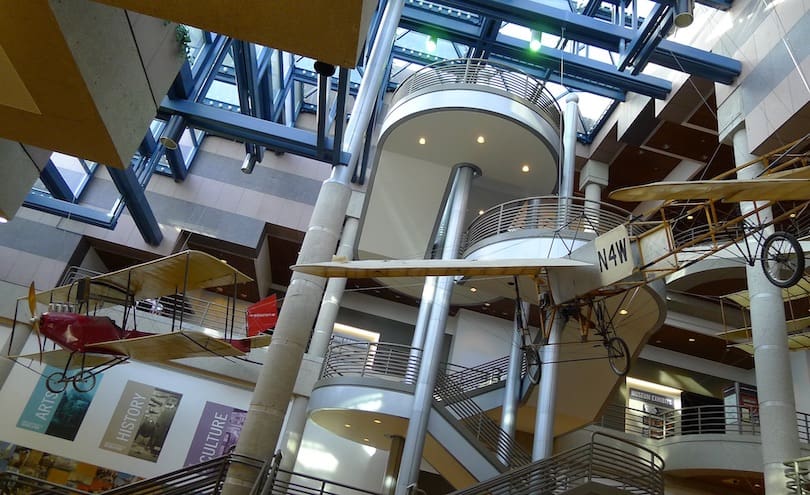Qutub Minar is a towering landmark located in Delhi, India. It is one of the most popular tourist attractions in the city, and a must-visit for history buffs and architecture enthusiasts. In this guide, we will take you through the history, architecture, and visiting tips of the iconic tower of India.
Introduction
Qutub Minar is a towering landmark in Delhi, India, with a rich history that dates back centuries. Standing at 73 meters tall, it is the tallest brick minaret in the world and an iconic symbol of India’s architectural and cultural heritage. In this article, we’ll take a deep dive into the history, architecture, significance, and myths surrounding Qutub Minar.
The Architecture of Qutub Minar
Qutub Minar is an architectural marvel that showcases the intricate designs and construction techniques of medieval India. The tower is made of red sandstone and marble, with a unique fluted design that tapers towards the top. The tower has five distinct levels, each marked by a projecting balcony and intricately carved columns and brackets. The topmost level is a small circular balcony with a diameter of just 1.25 meters.
The History of Qutub Minar
The origin of Qutub Minar can be traced back to the 12th century when it was commissioned by the first Muslim ruler of Delhi, Qutb-ud-din Aibak. However, it wasn’t completed until several decades later during the reign of his successors. The tower has undergone several changes and additions over the centuries, with each dynasty that ruled Delhi adding their own unique architectural elements to the structure.
The Significance of Qutub Minar
Qutub Minar holds immense religious, political, and cultural significance for India. It is considered a symbol of Muslim rule in India and a testament to the architectural prowess of the time. It is also a popular tourist attraction, drawing millions of visitors each year and contributing to the local economy. Additionally, Qutub Minar is a UNESCO World Heritage Site, recognized for its historical and cultural significance.
Religiously, Qutub Minar is associated with the establishment and spread of Islam in India. The tower and its surrounding monuments have been used for religious purposes by various rulers and communities over the centuries, making it an important site of religious pilgrimage.
Politically, Qutub Minar has played a significant role in India’s history. It was the site of numerous battles and invasions, and its strategic location made it a coveted possession for many rulers. The tower has also been a witness to various important events in India’s history, including the Delhi Sultanate, Mughal Empire, and British colonial rule.
Touristically, Qutub Minar is one of the most popular destinations in Delhi, attracting millions of tourists each year. Its unique architecture, historical significance, and cultural heritage make it a must-visit attraction for anyone traveling to India.
Visiting Qutub Minar: Things to Know
If you plan to visit Qutub Minar, there are a few things you should keep in mind. The monument is open every day from sunrise to sunset and has an entry fee for both domestic and international tourists. There are also specific regulations regarding dress code, photography, and behavior at the site, so make sure to check the rules before visiting.
Facilities available at the site include restrooms, drinking water, and a museum showcasing artifacts related to the history of Qutub Minar. Visitors can also hire guides to learn more about the monument’s history and significance.
Surrounding Monuments of Qutub Minar
Qutub Minar is surrounded by several other important monuments, including the Quwwat-ul-Islam Mosque, the Iron Pillar of Delhi, and the Alai Darwaza and Alai Minar. These structures were built during different periods and add to the cultural and historical significance of the site.
The Quwwat-ul-Islam Mosque, built in the 12th century, is one of the oldest and most prominent mosques in India. The Iron Pillar of Delhi, located in the courtyard of the mosque, is an ancient pillar made of iron that has withstood the test of time and weather for over a thousand years. The Alai Darwaza and Alai Minar were built during the reign of Ala-ud-din Khilji and represent the architectural excellence of the time.
Legends and Myths Associated with Qutub Minar
As with most ancient monuments, Qutub Minar has its fair share of legends and myths associated with it. One of the most popular legends is that the tower was built overnight by a supernatural power. Another popular myth is that the tower is cursed and brings bad luck to anyone who tries to conquer it.
There are also several stories related to the tower’s namesake, Qutb-ud-din Aibak, and his reign over Delhi. These myths and legends add to the intrigue and fascination surrounding Qutub Minar, making it an even more captivating destination for tourists and history enthusiasts.
The Future of Qutub Minar
As a monument of immense historical and cultural significance, the preservation and upkeep of Qutub Minar is of utmost importance. The Indian government has taken several steps to protect and maintain the monument, including regular restoration and preservation efforts.
However, there are also challenges facing the future of Qutub Minar, such as urbanization, pollution, and environmental factors. It is crucial to continue to raise awareness about the monument’s cultural significance and work towards its preservation for future generations to appreciate and enjoy.
Travel Tips & Tourist Attraction
Visitors to Qutub Minar can enhance their experience by following a few helpful travel tips:
- Arrive Early: Qutub Minar can get crowded, so it’s best to arrive early in the morning to avoid the crowds.
- Dress Appropriately: Since Qutub Minar is a religious site, visitors should dress modestly and cover their shoulders and knees.
- Wear Comfortable Shoes: There’s a lot of walking involved, so comfortable shoes are a must.
- Hire a Guide: Hiring a guide can enhance the experience by providing a wealth of information and insights into the history and significance of Qutub Minar.
Aside from Qutub Minar itself, there are several other tourist attractions in the area worth exploring, such as:
- Quwwat-ul-Islam Mosque: Located next to Qutub Minar, this mosque is one of the oldest in India and features intricate Islamic architecture.
- Iron Pillar of Delhi: This iron pillar is over 1,500 years old and has withstood the test of time, remaining rust-free despite being exposed to the elements.
- Mehrauli Archaeological Park: This park is home to several ancient monuments, including the Tomb of Balban and the Jahaz Mahal, making it a great place to explore for history buffs.
- Hauz Khas Village: A trendy neighborhood located nearby, Hauz Khas Village offers plenty of dining and shopping options for those looking for a break from sightseeing.
Overall, a trip to Qutub Minar is a must for anyone interested in India’s rich history and culture. With its stunning architecture and cultural significance, it’s no wonder that it remains one of the country’s most popular tourist attractions.
Conclusion
Qutub Minar is an iconic monument that embodies India’s rich history and cultural heritage. It is a testament to the architectural excellence of the time and a symbol of the establishment and spread of Islam in India. With its religious, political, and cultural significance, Qutub Minar remains a significant landmark and a must-visit destination for anyone interested in India’s history and culture.
The monument’s future relies on the efforts of the Indian government and the public to preserve and protect it from the challenges that lie ahead. By raising awareness about its cultural importance and working towards its conservation, we can ensure that Qutub Minar continues to be a source of pride and inspiration for generations to come.
FAQs
- What is the significance of Qutub Minar? Qutub Minar is a symbol of Muslim rule in India and a testament to the architectural prowess of the time. It is also a popular tourist attraction, drawing millions of visitors each year and contributing to the local economy. Additionally, it is a UNESCO World Heritage Site, recognized for its historical and cultural significance.
- How old is Qutub Minar? Qutub Minar was built in the early 13th century, making it over 800 years old.
- Can visitors go inside Qutub Minar? No, visitors are not allowed to go inside Qutub Minar due to safety concerns.
- What other monuments are located near Qutub Minar? Qutub Minar is surrounded by several other important monuments, including the Quwwat-ul-Islam Mosque, the Iron Pillar of Delhi, and the Alai Darwaza and Alai Minar.
- What is the best time to visit Qutub Minar? The best time to visit Qutub Minar is during the cooler months between November and February, when the weather is more pleasant for sightseeing.
















